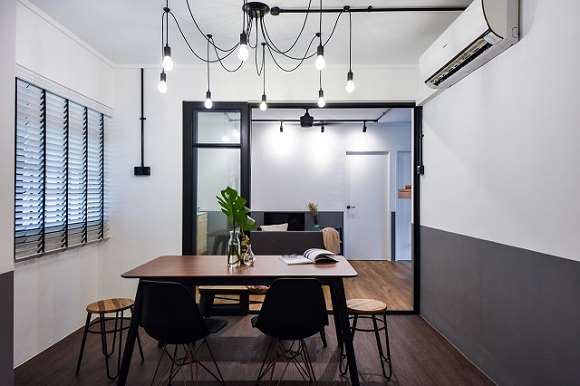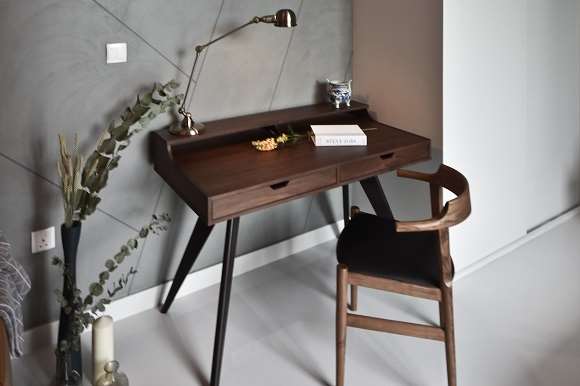
Love wood furniture? Here’s how to judge its quality!
We all love wood, don’t we? In fact, those of us with keen eyes would probably have noticed, homes worldwide almost always have wood furniture to make the space look more beautiful.
But surprisingly, not many of us seem to really understand how to select quality wood furniture, and judge if they are worth their prices. I mean, how often have we paid a hefty sum for a piece of wood furniture, not knowing if we are overpaying for it (like those overpriced engineered wood pieces from IK*A!)
So, we’ve broken down this age-old question to help make buying wood furniture, in the future, a breeze for you! Here goes~
Type of wood
Alright, first things first! When it comes to buying wood furniture, the most important thing you need to check is the type of wood that the furniture is made up of. But truth be told, there are a dozen types of wood to say the least, so much so that it’s almost impossible to ever remember the good and bad of each of these woods. So, instead of complicating things like the furniture stores always do, let’s keep things sweet and simple. All we need to understand are the three broad categories of wood:
1) SOLID HARDWOOD
Made from deciduous leafy trees, many people call hardwood the real deal. And that’s not surprising given the premium quality such wood offer. If the entire furniture is made of full solid hardwood (which is really quite hard to find nowadays, by the way), you can bet they will be way costlier too.

Types of wood:
Chipboard, fiberboard, plywood, veneers
How to tell it’s solid hardwood:
Now, to tell if the furniture is made of solid wood, simply observe the grains on the furniture. Real solid wood furniture would have grains that run smoothly and are aligned throughout different sides of the furniture, just like how real tree grains would run.
In fact, don’t be surprised to find that most solid wood furniture are NOT of uniform sizes. Not that they are manufacturing defects, but rather, because they are made of real trees, they follow the shapes and contour of the trees. That’s also the reason why luxurious homes love such wood, because each piece of furniture is unique and truly one-in-the-world.
Between solid hardwood and softwood, the easiest way to tell them apart, is to observe the density/weight of the furniture. Hardwood are usually heavier, have less knots (those black spots you see in wood surfaces), and won’t get scratched so easily.
Pros:
Hardwoods are mostly of premium quality; they are denser, sturdier and more resistant to scratches and cracks.
Cons:
And of course, for the high quality such wood offer, be prepared to pay more for them too.
2) SOLID SOFTWOOD
The second type of wood is the solid softwood. The funny thing is so many of us think hardwoods are hard, and softwoods are soft. But, really, no, that’s not true. The key distinction is that softwood come from coniferous trees (you know those with needle-like “leaves”? ) which generally grow faster and are hence cheaper to reproduce. But precisely because they grow faster, they are also less dense, and thus less sturdier than hardwood.

Types of wood:
Pine, redwood, cedar
How to tell it’s solid softwood:
Softwood tend to be less resistant to scratches and cracks, due to the knots they bear. One way to test it “live”, is to try scratching it a little (P.S. don’t try this blatantly at the furniture store). If you see a scratch easily forming, that could very well be a softwood.
Pros:
Compared to solid hardwood, the softwoods are definitely more price-friendly.
Cons:
3) ENGINEERED WOOD
As you might have guessed it, engineered wood is not natural wood. They’re either made up of pieces of wood waste combined together (chipboard, fiberboard) or have a better-quality veneer laid over a layer of lousier-quality wood.

Types of wood:
Chipboard, fiberboard, plywood, veneers
Oft times, chipboard and fiberboard are the easiest to spot. Try knocking on it or looking at the bottom of the furniture, and you will find that they are a lot less dense and definitely not made of a full piece of wood.
Instead, the more misleading ones are the veneers that look almost like a real solid wood. So, how then do you tell the real from the veneers? Simply look out for 2 things. One, veneer wood have grains that don’t follow through from the top to the side of the furniture. Instead, they have repetitive grain patterns. And, the bottom surface of the furniture is usually different from the other easily-visible surfaces.
Pros:
What more can we say, other than that they are more readily available in the market and hence cheaper than solid wood? A word of caution though, not all veneers are of lousy quality. Veneers from exotic wood can be applied on solid wood too, making an already expensive furniture even more expensive!
Cons:
Unlike solid wood, engineered wood are usually susceptible to water damage. So, unless you want bubbles to form or the edges to peel, then keep them away from water! And oh, there are also cases where cracks may form when veneer and the base material contract/expand at different rates over time. Ouch!
Furniture workmanship

1) HOW THE WOOD PIECES ARE JOINED TOGETHER
The best pieces of wood furniture are those that are joined through dovetails or screws. Or, if wood pieces are ever glued together, be sure to double confirm the glue can’t be seen! And, avoid wood pieces that are merely stapled together.
2) DETAILS IN THE FURNITURE CONSTRUCTION
And of course, it’s all in the details! Furniture manufacturers who really want to design for quality would care utmost about how well the furniture fits the usage. So, do give the furniture a check! Ask yourself, do the drawers come with stoppers to prevent them from sliding out fully? Are the doors easily to slide or open? Do they wobble when you shake them a little?

